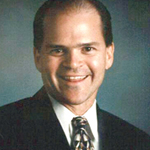Results Start With the Right Diagnosis
In 30 years of practice, far too many of Dr. Rick Graebe’s more than 60,000 patient examinations have shared a common trait – a misdiagnosis.
Whether it’s ADHD, dyslexia or poor study skills, often the source of trouble can be traced to the visual system.
This is particularly true of Dr. Graebe’s school aged patients, because more than 80% of schoolwork is perceived through the eyes, and three out of four reading problems are traced to poor binocular vision.
If a student’s visual system is functioning at less than peak performance, failure can be inevitable.
Stamping out failure in the classroom is one of the main reasons Dr. Graebe goes to work every day at his optometrist practice in Versailles.
“Working with young people is a personal passion of mine because they have their whole world ahead of them,” Dr. Graebe said. “Kids are fun to work with because they are open, not set in their ways and we can have an effect on them for their whole lives.”
Dr. Graebe doesn’t dispute that ADHD, for example, is a legitimate diagnosis.
However, his specialty, Visual Therapy, which is a kind of physical therapy for the eyes, brain and body, treats the same symptoms but without medication.
Instead, Vision Therapy consists of interactive exercises that kids actually enjoy.
The goal is to address one of three problems of the visual system – the inability of the eyes to point and focus correctly, to track across the page and to process, understand and make sense of what the eyes see.
“When students are spending so much energy just trying to process sensory input, there is no energy left for comprehension,” Dr. Graebe said.
He describes students diagnosed as ADHD as struggling to separate the “noise from the signal.”
When visual system filters are working improperly, the person can feel like the whole world is crashing noise.
Vision Therapy helps turn down the volume by integrating the visual system with other senses. That’s why Dr. Graebe’s office looks like a physical therapy room. Students use balance beams and exercise balls to integrate the senses.
The results over the years (the walls of Dr. Graebe’s office are lined with testimonials from parents) attest to the success of his methods.
“We are here to serve and help people reach their full potential,” he said. “By helping our clients, we are, in our way, making the world a better place.”

